Original Gilles Messier Leviathan
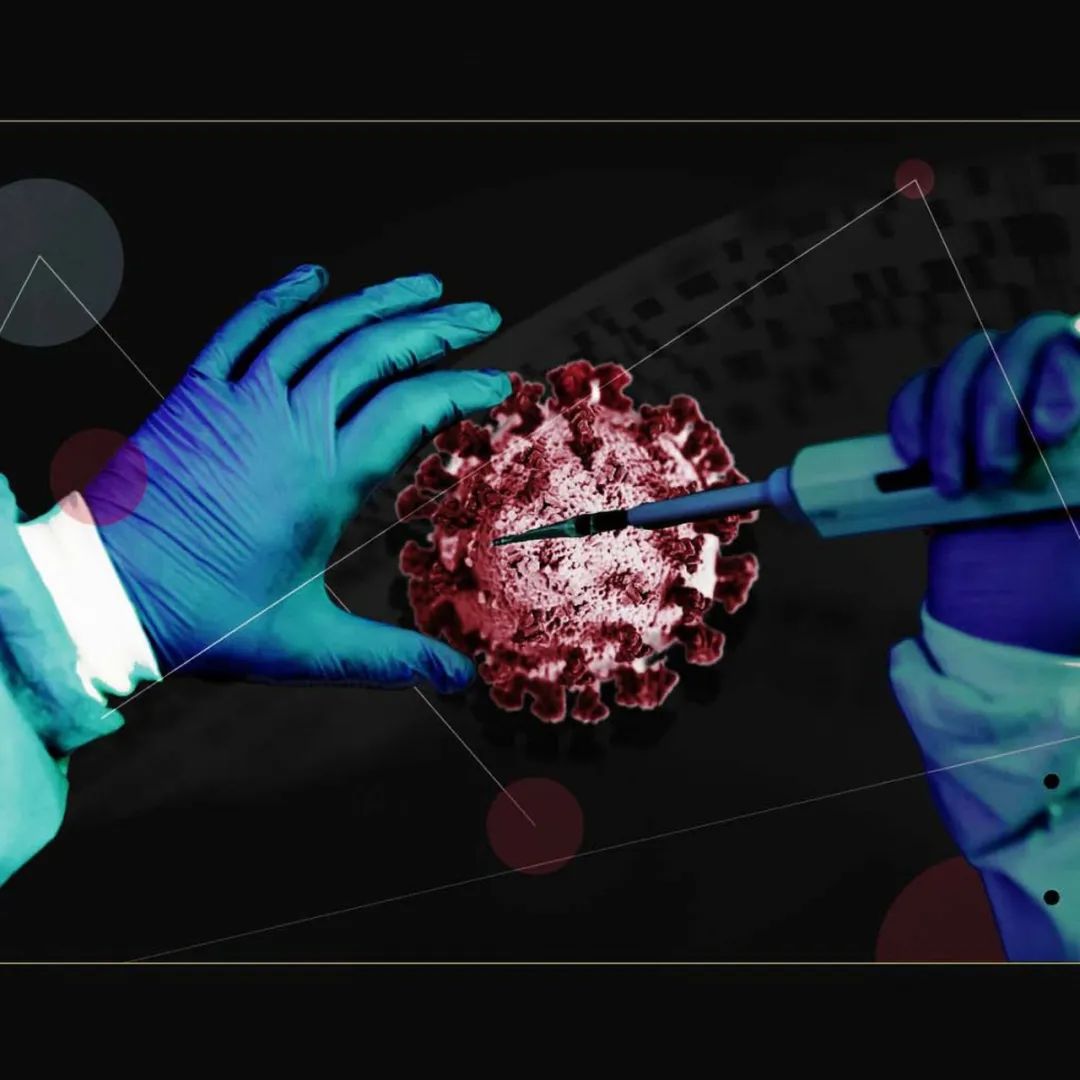
? Vox
Leviathan press:
Judging from the short history of human civilization, our knowledge of the virus can be regarded as a very recent thing. But even today, the debate about whether viruses belong to life continues. Not only that, people who know a little about viruses are expected to have extremely complicated feelings about this strange thing that is invisible to the naked eye: although most viruses are friendly, they are always very deadly …
Tell me another funny story.
The picture below is not a virus, but a flagella of bacteria. Yes, as shown in the figure, flagella functions as a propeller of a ship, which can rotate at high speed in the environment, thus pushing the bacteria forward.
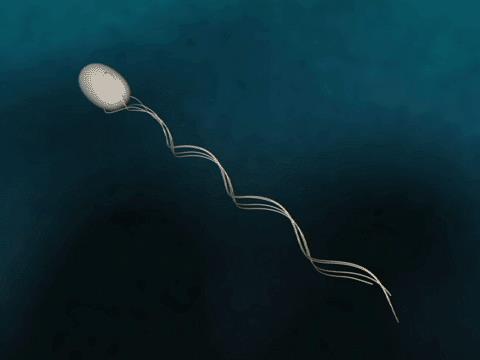
If the internal structure of bacteria is enlarged by 50,000 times, it will be found that there is a very complicated system behind its rotation, similar to the engine of a ship, with exquisite machine parts such as rotating shaft and push rod. These components are assembled in an orderly way for the whole function, and each component plays its due functional role. This combination is not a blind random patchwork, but a delicate micro-engineering. Molecular machines, 40 kinds of proteins, plays the role of these components. Some of these molecules get energy from the environment, some are responsible for sensing, and some are responsible for rotation like bearings. Some people think that the operation of this whole system is obviously a highly intelligent and exquisite micro-engineering. It cannot be explained by a simple Darwinian evolutionary mechanism.
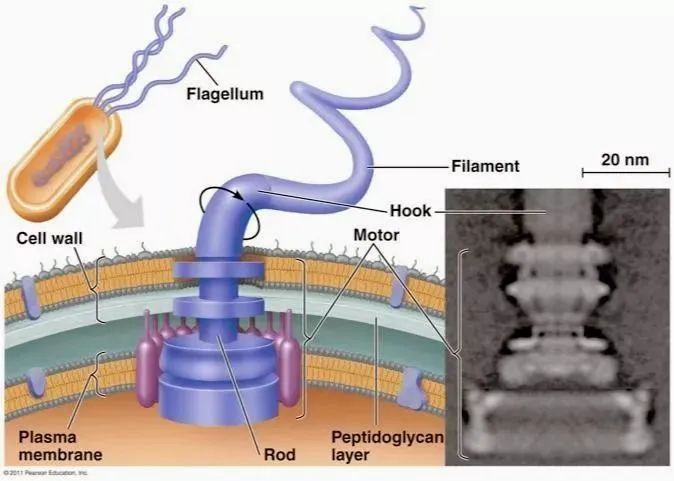
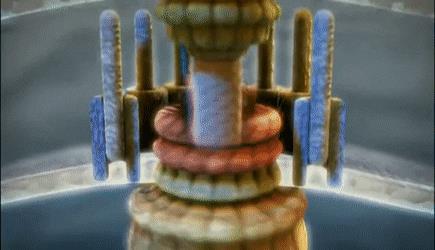
Search [Leviathan Song List] in Netease Cloud Music, and don’t get lost.
We have a new number [Leviathan Planet] to watch.
In the past two years, SARS-COV2 virus, better known as COVID-19 (Covid-19), has ravaged the world, causing more than 346 million infections and 5.58 million deaths. Everything is waiting for prosperity, and many countries have closed their borders. Our life has been completely changed. It is really shameful to think that human beings are struggling in the face of this pathogen smaller than most bacteria. What is even more embarrassing is that this pathogen may not even be alive.
Different from other pathogenic factors such as bacteria, protozoa and fungi, viruses are in the fuzzy zone between living and nonliving, and there are different opinions on which side to classify them. This is a heated and long-lasting debate, which leads to a basic question in biology: What is "life"? So, is the virus a life form? Let’s find out!
In order to know whether a virus is a living body, we must first understand what a virus is.
Viral diseases such as smallpox, rabies, polio and influenza have been with us since the birth of mankind, and it is not until recent years that scientists really understand the specific pathogens that cause these diseases. With the continuous development of microbial theory put forward by Robert Koch, Louis Pasteur and others in the mid-19th century, scientists began to find and isolate the pathogens that caused every known disease. This includes tobacco mosaic, a disease that will hinder the growth of tobacco plants and cause their leaves to grow mottled "mosaic" patterns.
In 1892, Russian botanist Dmitri Ivanovsky ground the infected tobacco plants, filtered the juice with a ceramic filter with a pore size too small for bacteria to pass through, and inoculated the filtered juice on the uninfected plants. To his shock, these plants can’t escape the clutches of disease. Ivanovski thought that the disease might be caused by some kind of chemical toxin that can pass through the filter screen, but he didn’t explore the matter further.
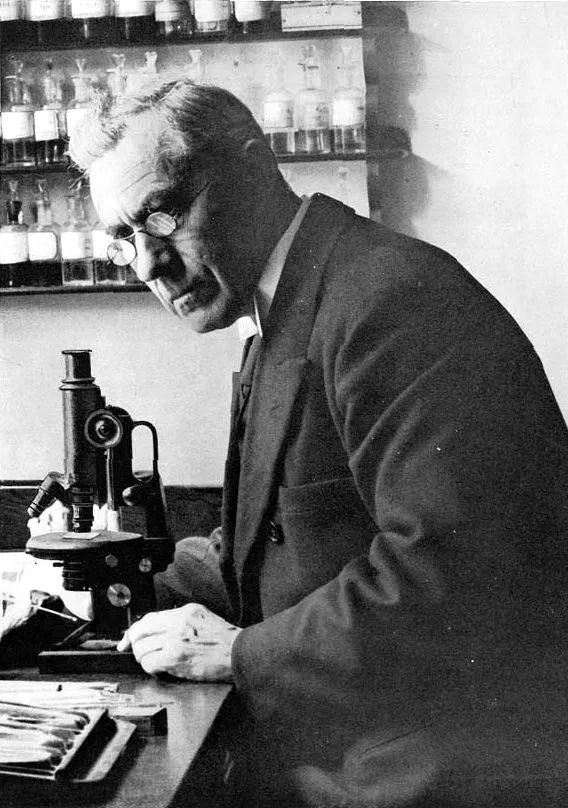
Martinus Bayelink (1851-1931). ? Wikimedia Commons
Six years later, the Dutch microbiologist Martinus Beijerinck repeated the above experiment and confirmed this puzzling result. However, he further expanded the experiment. After infecting one plant, Bayelink smashed its leaves, filtered the juice, and continued to infect the next plant, and so on. He speculated that if the pathogenic factor is a toxin, its infection efficiency will decrease with the further spread between plants, but no matter how many times he spread the disease, the infection efficiency is not less than half a point.
At first, he simply thought that the pathogenic factor was just a surprisingly small bacterium, but no matter how hard he tried, he couldn’t make it grow in the culture medium-this is the standard method for cultivating bacteria in the laboratory. And it is not affected by alcohol, which can kill almost all known bacteria. What is more strange is that this puzzling pathogenic factor seems to grow and reproduce only in the presence of living cells that can divide.
Because it was not clear what the pathogenic factor was, Bayelink named it "contagious living fluid", and later called it "filterable virus", and the word "virus" means toxin in Latin.
In the following decades, scientists used ceramic filters to find more and more viruses. In 1898, they found foot-and-mouth disease virus that caused foot-and-mouth disease, and in 1932, they found yellow fever virus and rabies virus. It was only in 1935 that the first real breakthrough was made in understanding the nature of the virus.
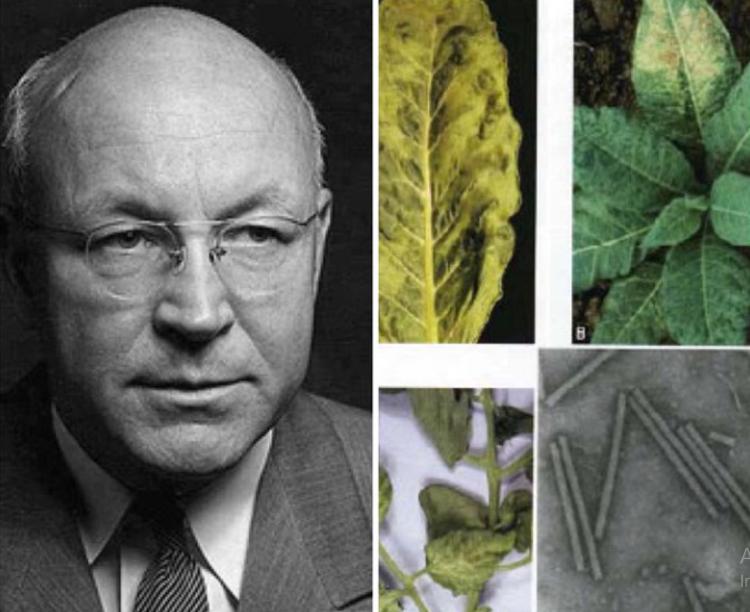
Wendell Stanley (1904-1971) thought that tobacco mosaic virus was a granular substance composed entirely of protein. ? Sutori
At that time, Wendell Stanley, an American chemist, thought that tobacco mosaic virus was a granular substance composed entirely of protein, not the kind of liquid that Bayelink guessed. Stanley even managed to purify the virus particles into needle-like crystals, which can be stored in the laboratory for a long time without affecting the efficacy of infection. As reported by The New York Times in 1940, the discovery caused an uproar in the scientific community:
"Dr. Wendell Stanley of Rockefeller Institute of Medicine made the crystallization of tobacco mosaic virus, which made biologists quarrel as a bee. But it should be. Are these crystals alive? Obviously, it is no more special than diamonds, glass, sand and other familiar crystals. However, if these virus crystals are placed on tobacco leaves, mosaic will spread like a spark, just like being infected by living bacteria. "
Stanley’s discovery won him the Nobel Prize in chemistry in 1946, which seems to have sentenced him to death for the "vitality theory" that has prevailed for centuries. This theory holds that an organism contains some important essence or "sacred brilliance", which brings life. In contrast, the biochemical hypothesis holds that life is just a chemical process, and Stanley found that protein particles with inert surfaces can reproduce and spread like living organisms, which seems to confirm this hypothesis.
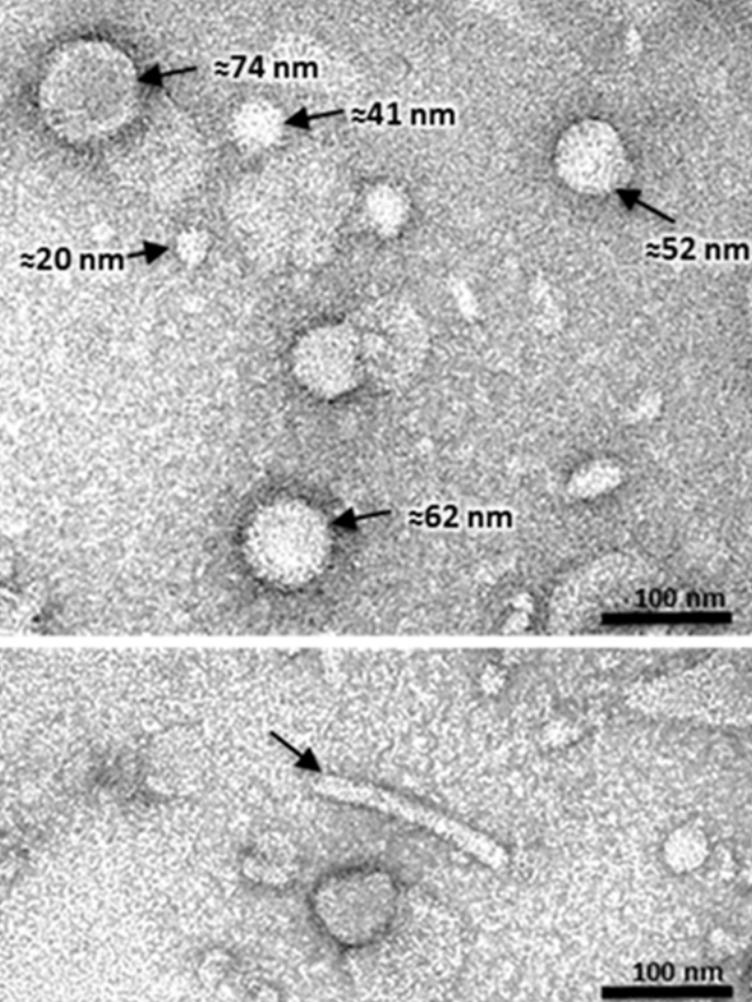
? PLOS
However, there are still many unsolved mysteries. In the same year that Stanley made his discovery, the invention of the electron microscope made it possible for viruses to be directly observed by human beings for the first time, and also revealed why microbiologists had not found them for so long. The particle diameter of most viruses is about 100 nm, which is 1/100~1/10 of the diameter of bacteria, so it is difficult to observe by ordinary optical microscope. But this can’t explain why an ordinary protein particle can’t grow under laboratory conditions, although it has vitality.
In 1926, Thomas Rivers, an American microbiologist, put forward an explanation when he gave a report at the American Society of Bacteriology:
"The virus seems to be an obligate parasite whose reproduction depends on living cells."
In other words, the virus does not reproduce itself through cell division like bacteria, protozoa, fungi and other microorganisms, but produces more virus particles by hijacking molecular machines of other living cells. But how did the virus accomplish this hijacking?
Facts have proved that the biggest piece of the puzzle is still missing. Wendell Stanley’s follow-up research revealed that tobacco mosaic virus is not only composed of protein, but actually includes ribonucleic acid, that is, RNA. From 1930s to 1940s, there was a great discussion in the scientific community on how to realize intergenerational transmission of genetic characteristics in organisms.
Although the laws of heredity were discovered by Czech priest Gregor Mendel in the 1960s and perfected by American biologists Thomas Hunt Morgan and Hermann Muller in the early 20th century, the specific molecules that encode and transmit specific genetic information have not been unveiled.
Some scientists speculate that RNA and its brother DNA may be genetic material, but most people think that the genetic material is more likely to be protein, because the latter has a more complex structure, so it can store more genetic information. Viruses play an important role in determining which hypothesis is correct.
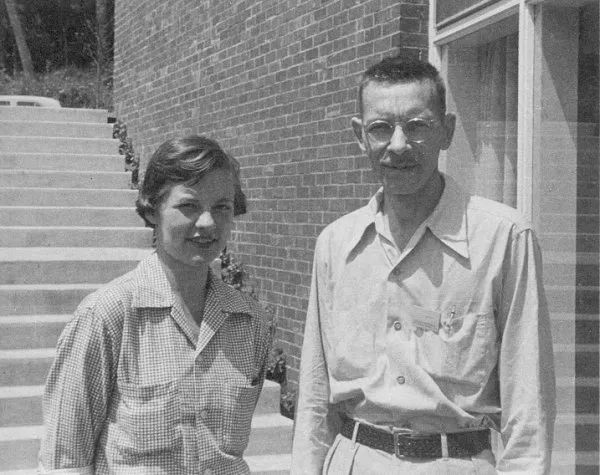
In 1953, Martha Cowles Chase (left) and Alfred hershey. ? PaulingBlog/Karl Maramorosch
In 1952, American bacteriologists Alfred Hershey and Martha Chase Chase carried out a series of experiments with ——T2 phage, a virus that can infect Escherichia coli, which is now considered as a classic. Scientists at that time knew that the virus would inject a part of its own substance into the host cell and leave the rest outside the body.
But the question is: Is the injected part nucleic acid or protein?
To find out, hershey and Chase labeled a cell culture medium with radioactive sulfur, which made only protein in this batch of viruses have radioactive labels. Another batch of viruses were cultured in the presence of radioactive phosphorus, which made only the nucleic acid part of these viruses labeled. The two batches of viruses were then infected with unlabeled Escherichia coli respectively. The researchers used centrifuges to centrifuge the subsequent culture solution to separate the infected bacteria and the discarded noncoding part of the virus.
When two scientists detected the radioactivity of infected cells, they found that the bacteria in the experimental group with phosphorus labeled were radioactive, while the experimental group with sulfur labeled was not radioactive. This also confirmed that the virus injected nucleic acid into bacteria instead of protein. Later, scientists such as Rosalind Franklin, James Watson and Francis Crick explained the structure and function of DNA and RNA, thus opening a genetic revolution that still affects the world today.
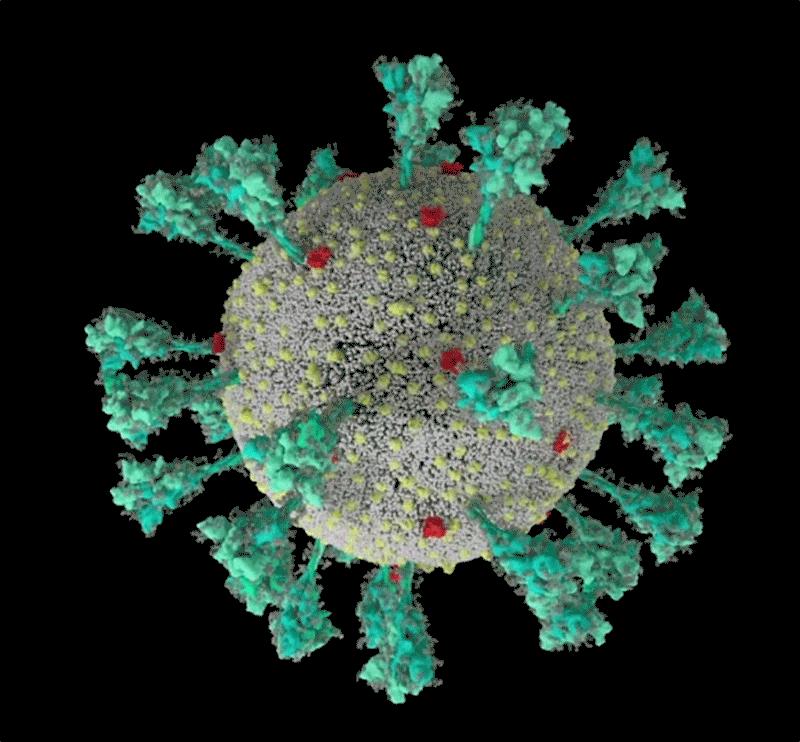
Computer simulation diagram of the structure of coronavirus (SARS-CoV-2). ? Janet Iwasa/University of Utah
Today, people know that all viruses consist of two basic parts: a sequence similar to DNA or RNA, and a protein shell or capsid-or as the British biologist Sir Peter Medawar succinctly described:
"(Virus) is a bad piece of information wrapped in protein."
The shape and size of the virus are ever-changing, from porcine circovirus with a diameter of about 27 nm to pithovirus with a length of about 1.5 μm; From long tubular tobacco mosaic virus to spherical coronavirus. In addition to the protein shell, many viruses also contain lipid envelopes obtained from host cells. The life cycle of viruses begins at the moment when they enter the host cell and contact with its cell membrane. If a cell is susceptible to the virus, the virus will adhere to its surface and inject genetic material and some enzymes into the cytoplasm of the cell like a micro-syringe, leaving its capsid.
Once in the cell, the genetic material of the virus begins to show its evil fangs, hijack the metabolic mechanism of the cell, and transform it from an independent organism into a small biological factory with only one purpose: to produce more virus particles. Viruses accomplish this hijacking process in several different ways.
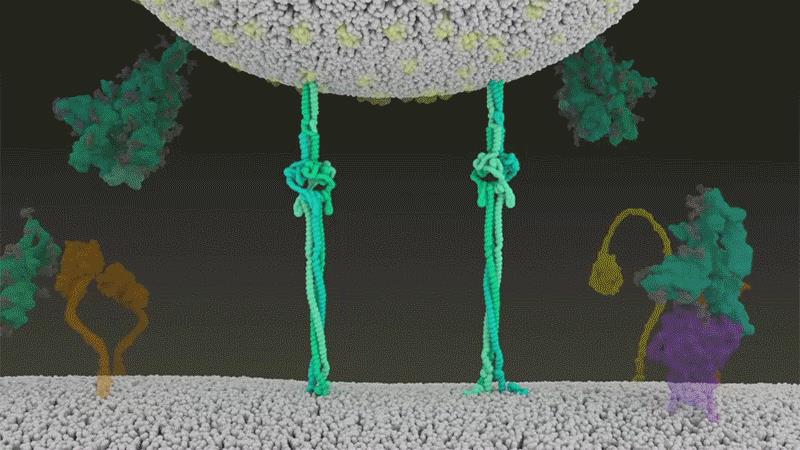
Animation demonstration of fusion mode between coronavirus and cells. ? Janet Iwasa/University of Utah
For DNA virus, its genetic material will replace the cell’s own DNA, and use the cell’s own enzyme to transcribe the invading genome into messenger RNA, that is, mRNA. The mRNA is then read by organelles called ribosomes, which use the read genetic instructions to assemble amino acids into protein. Ribosomes no longer produce the conventional protein used to maintain the normal operation of cells and become the "initiator" of new viruses. RNA viruses, on the other hand, contain mRNA that can be directly read by ribosomes, and can completely skip the step of DNA transcription.
In addition, there is a retrovirus with more subtle genetic skills. Retroviruses, including HIV, contain a special enzyme-reverse transcriptase, which can integrate the virus RNA into the host cell’s own DNA. This embedded virus genome is called protovirus, which can sleep in the host genome for a long time, avoid the monitoring of the immune system, and spread between cells with cell division and reproduction unnoticed. They can also be activated spontaneously, causing cells to start producing viruses again. This makes people helpless about retrovirus infection.
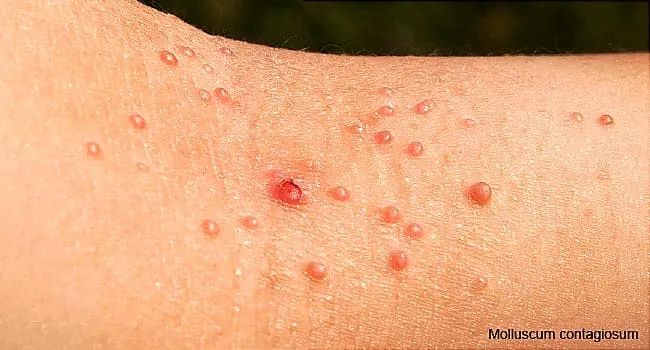
Rash is a common symptom of HIV infection. ? WebMD
However, the importance of retrovirus to human beings far exceeds the impact of diseases caused. In the long evolutionary history of mankind, fully 8% of human genes were obtained from protoviruses. Obviously, these gene hitchhikers have had an important and noticeable impact on the development of life on earth.
( www.ncbi.nlm.nih.gov/pmc/articles/PMC7093845/)
Once the new virus particles are assembled, they must then leave the host cell. Many viruses that infect bacteria or other single-celled organisms will accomplish this goal through the lysis cycle. In this process, the cell membrane will rupture or dissolve, the host cell will die and release a new generation of virus into the environment.
However, if the virus kills the cell it meets, it will quickly lead to the death of the host and the virus living in it, so most viruses will leave the cell by exocytosis or "budding" and pass through it without destroying the cell membrane. However, in any way, it will eventually lead to the same goal: the newly assembled virus is released into the environment, gearing up to infect new cells and start the process again.
﹡﹡﹡
Now that we know what viruses are and how they reproduce, let’s go back to the original question: Are viruses really alive?
Like many questions in biology, the answer to this question depends on how to define life accurately. Biologists have not reached a consensus on what they actually study, which is unique in the whole scientific community. At first glance, the question of whether something has life seems very intuitive.
However, throughout the long history, even the greatest scientists and philosophers can’t give a rigorous and verifiable definition of life. The consensus we can reach can basically be condensed into "seeing is believing". However, the lack of this definition does not prevent biologists from continuing their research work, and the discussion on the definition for many years has only remained philosophical curiosity. However, when people began to explore the universe and look for life on other planets, "what is life?" The problem suddenly becomes important.
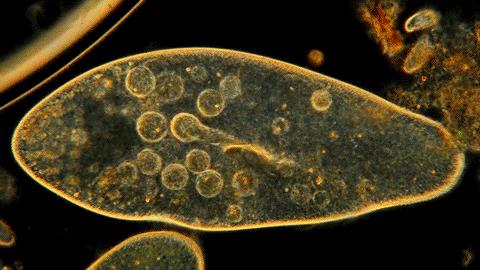
? Baamboozle
For many years, various scientists have been trying to draw a list of unique properties of life. The following is one of the reports from NASA website:
"[Life] has the ability to obtain energy from the environment and convert it into its own growth and reproduction. Life tends to be homeostatic: it can achieve a balance in many elements that define its internal environment. Living things can respond (to the environment) and produce actions similar to reactions through stimulation, such as retraction and even more advanced forms such as learning. Life is reproductive, because of the mutation of population and natural selection, the evolution of life needs a certain degree of replication. In order to survive and develop, living things need to become’ consumers’ first, so as to exchange biomass, create new individuals and excrete waste. "
However, many nonliving systems also exhibit many of the above properties. For example, crystals can spontaneously assemble into amazing complex and orderly shapes, replicate themselves, transfer the same internal structure between crystals, and even move in response to external stimuli. Similarly, a black stone can also convert solar energy into heat energy, and convert it into kinetic energy by heating the surrounding air. At the same time, radioactive components in it will spontaneously convert nuclear energy into heat energy.
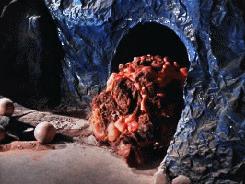
Horta, who lives on rocks in Star Trek. ? Tumblr
The above definition becomes even more vulnerable when applied to the biological world. For example, prion is the pathogenic factor of bovine spongiform encephalopathy (the disease is better known as mad cow disease)-it is even simpler than ordinary virus, consisting only of a misfolded protein and does not contain any genetic material. However, prions can mutate, spread and reproduce among species-although not through genetic information, but through causing the wrong folding of adjacent proteins to trigger a fatal chain reaction.

Erwin Schr?dinger (1887-1961). ? Times Literary Supplement
The Austrian physicist Erwin Schr?dinger, who is famous for putting imaginary cats into imaginary boxes, put forward a set of unique properties of more complex life forms. After he published in 1944, what is life? 》(What is Life? ), Schrodinger said:
"Organisms have an amazing gift of self-control of the’ order flow’, so they can avoid the decay of atoms into chaos."
In other words, life seems to violate the second law of thermodynamics, which holds that in a closed system, entropy-defined in different ways as disordered state or energy that cannot be used for useful work-is always increasing. In the face of disorderly natural forces, organisms not only managed to maintain a high degree of internal order and complexity, but also maintained this order for generations without losing fidelity.
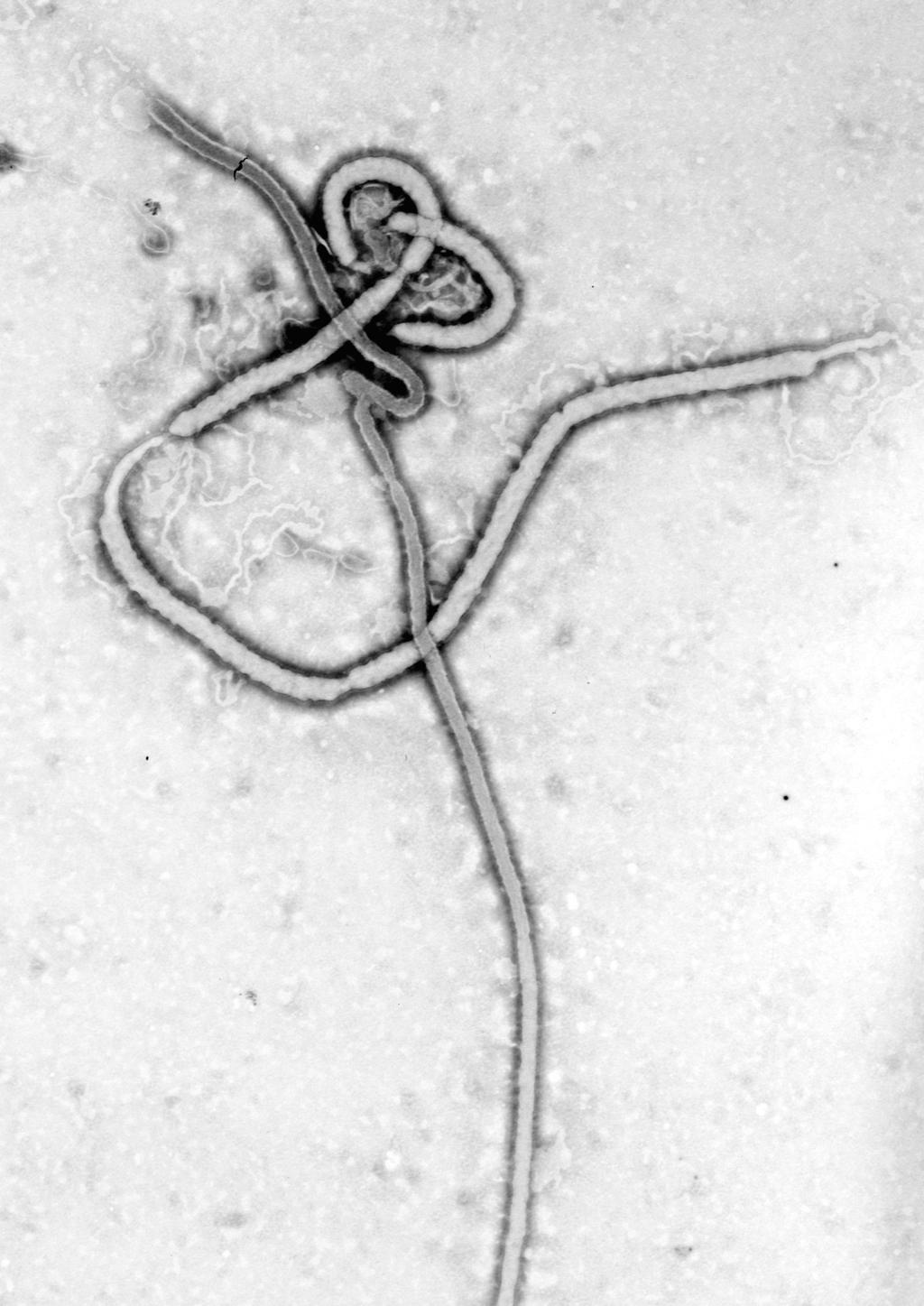
Ebola virus. ? National Human Genome Research Institute
Of course, living things do not really violate the second law, because they are not closed systems. They are semi-closed systems. On the one hand, they are closed enough to maintain internal order, and on the other hand, they are open enough to ensure that the increase of internal order will be offset by the decrease of external order-for example, by discharging excess heat (to reduce the internal entropy of living organisms and increase the environmental entropy). However, these observations lead Schrodinger to speculate that the semi-closed structure is very critical for the realization of life functions.
More importantly, he further speculated that in order to accurately pass on their internal structure and complexity to future generations, living beings need to build some form of "code script", which includes instructions for building this particular living body. Later, this prescient prediction was fulfilled with the confirmation of DNA structure and function in less than ten years.
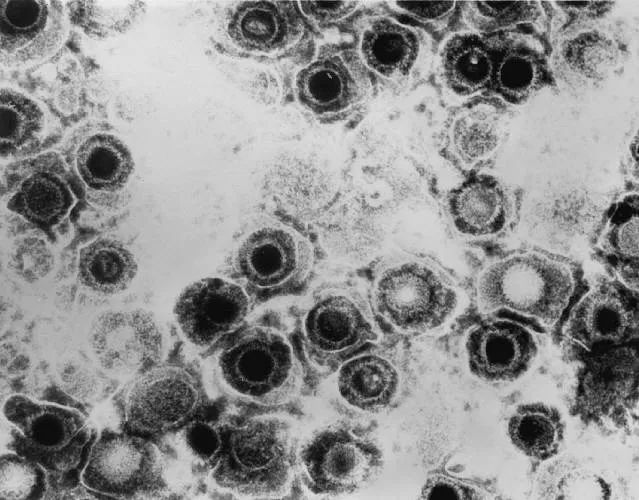
Herpes simplex virus type 1 (HSV-1). ? Pharmaceutical Technology
Following Schrodinger, John Maynard-Smith, a British biologist, thinks that the essential attribute of life is that it can stand the test of Darwinian natural selection, and those genetic characteristics that can increase the reproductive capacity of organisms are preferentially selected and passed on to future generations, so as to ensure the continuous evolution of species over time. Finally, this concept was combined with the previous definition, resulting in the so-called "NASA life definition", which refers to:
"Life is a chemical system that can adapt to the evolution proposed by Darwin and achieve self-sustainability."
For the viewpoint of adapting to evolution in the definition of life, viruses are certainly worthy of the name-Covid-19 has rapidly mutated and produced many varieties, which clearly reflects this. However, the view that "virus is a living body" is controversial in the first point of definition. Unlike other living organisms, viruses cannot reproduce without other living cells. If we can’t hijack the molecular mechanism of the host cell, the virus is just an inert protein and genetic material. Therefore, Gerald Joyce of Salk Institute thinks:
"According to this basic definition, the virus does not meet the standard."
Whether it can be classified as a living body or not, it is obvious that viruses play an important role in the natural environment. Although it can’t be accurately determined, biologists estimate that there are about 10.31 kinds of viruses in the world. If all the viruses are connected one by one, they will extend to 200 million light years away, which makes people stunned-far exceeding the farthest known galaxy. In all environments on earth, we can find traces of viruses, which can infect all known organisms. Although most viruses are friendly, they will not cause malignant diseases.

? BioCosmos Africa
Nevertheless, they still have a great influence on the evolution of life on the earth, especially they will insert virus genes into the DNA of the host by reverse transcription. For example, the existence of blood orange should be thanks to the virus gene named Tcs2, which will respond to the cold climate and transform into the gene named Ruby, which gives the pulp a unique deep red tone.
More closely related to us human beings is an ancient gene named ErwW-1, which is the reason for the formation of syncytiotrophoblast, a fused cell structure in human placenta, and this structure is very important for the transfer of nutrients to developing embryos. Therefore, all of us owe our existence to a virus that infected African apes millions of years ago.
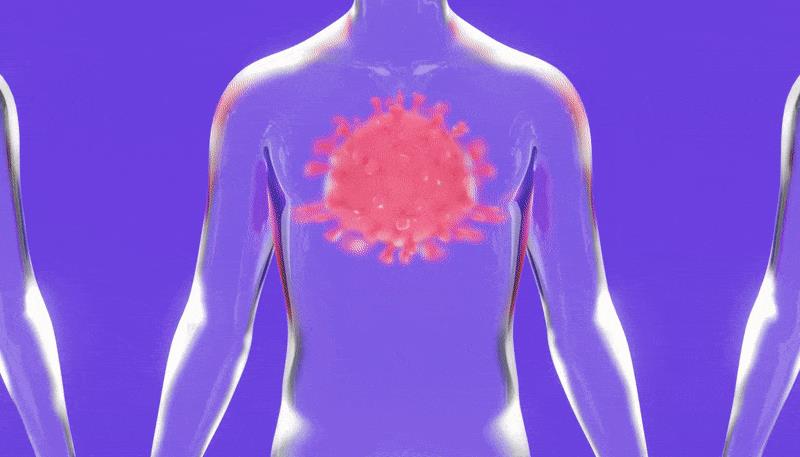
? Timo Lenzen
For various reasons, some scientists think that NASA’s definition of life is too narrow and should be expanded to include marginal cases such as viruses. Patrick Fortel, a microbiologist at the French Pasteur Institute, is one of them. He thinks:
"Life and the process of life are just some names for the complex evolution forms of substances currently existing on our planet."
Fortel thinks that virus is not only a collection of protein and nucleic acid, but also an organism with two different states in its life cycle: virus particles and "virocell", that is, living cells captured by virus particles and transformed into more virus particles. In Fortel’s theory, a virus cell is completely different from a normal healthy host cell-a "ribocell". The difference between them lies in:
"The dream of normal cells is to divide to produce two cells, while the dream of virus cells is to produce 100 or more virus cells."
Therefore, according to Fortel’s theory, virus particles are to virus cells what seeds are to oak trees. Viruses are no different from any other parasites, and depend on the growth and reproduction of host cells. The virus is only more dependent.
Other scientists think that any effort to define life strictly is futile, because it will prevent us from understanding the strange life forms that have not yet been discovered on the earth or other planets. As the scientific philosopher Carol Cleland of the University of Colorado said:
"Definition only tells us the meaning of a word through our language, but it doesn’t tell us the nature of the world. In the case of life, scientists are interested in the nature of life rather than the meaning of the word’ life’ in our language. What we really need to do is to propose a universally applicable life system theory, rather than a precise definition of the word’ life’. "
Despite the ever-changing forms, life on earth only represents one aspect. The key to forming the universal theory of life system is to explore other possibilities of life. I am interested in developing a strategy to find extraterrestrial life, so that people can expand the boundaries of our concept of life centered on the earth.
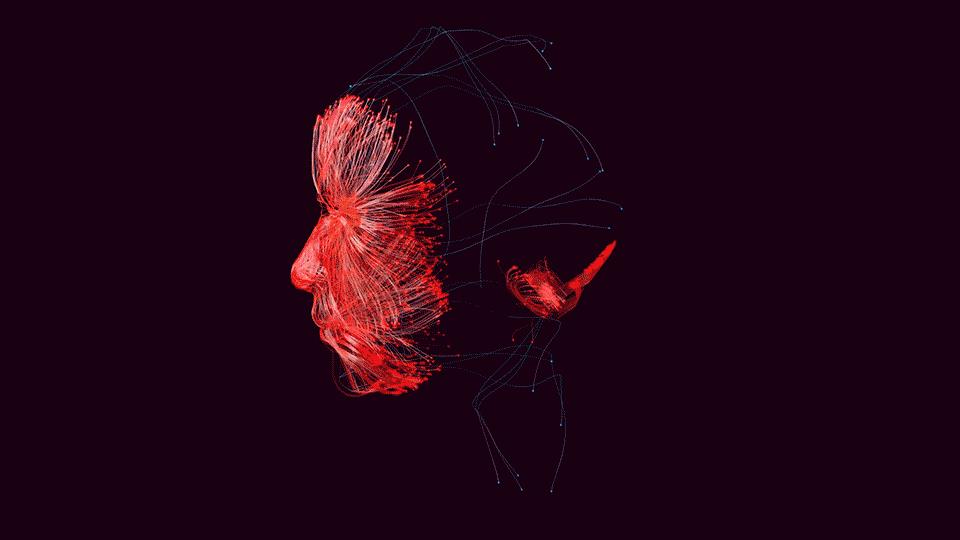
? Shira Inbar
On the other hand, I think it is futile for scientists to define "life" tirelessly, because it can’t tell us what we really want to know-"what is life". The scientific theory of life will answer these questions in a satisfactory way, and it will also work for some marginal cases. It is not helpful for the development of life science to include atypical "life" in the category of "life" just for the sake of some people’s own pleasure. "
The debate is getting worse and worse, and almost all biologists firmly believe that this problem has been solved in one way or another. What we can be sure of is: considering their influence on life on earth in the past, present and future, whether viruses are living things or not, they deserve our utmost admiration and respect.
Text /Gilles Messier
Translator/pharmacist
Proofreading /Yord
Original/www.todayifound.com/index.php/2022/06/are-viruses-actually-alive/
Based on Creative Sharing Protocol (BY-NC), this article was published by pharmacists in Leviathan.
The article is only the author’s point of view and does not necessarily represent Leviathan’s position.
Original title: "Is the virus really alive? 》
Read the original text
关于作者